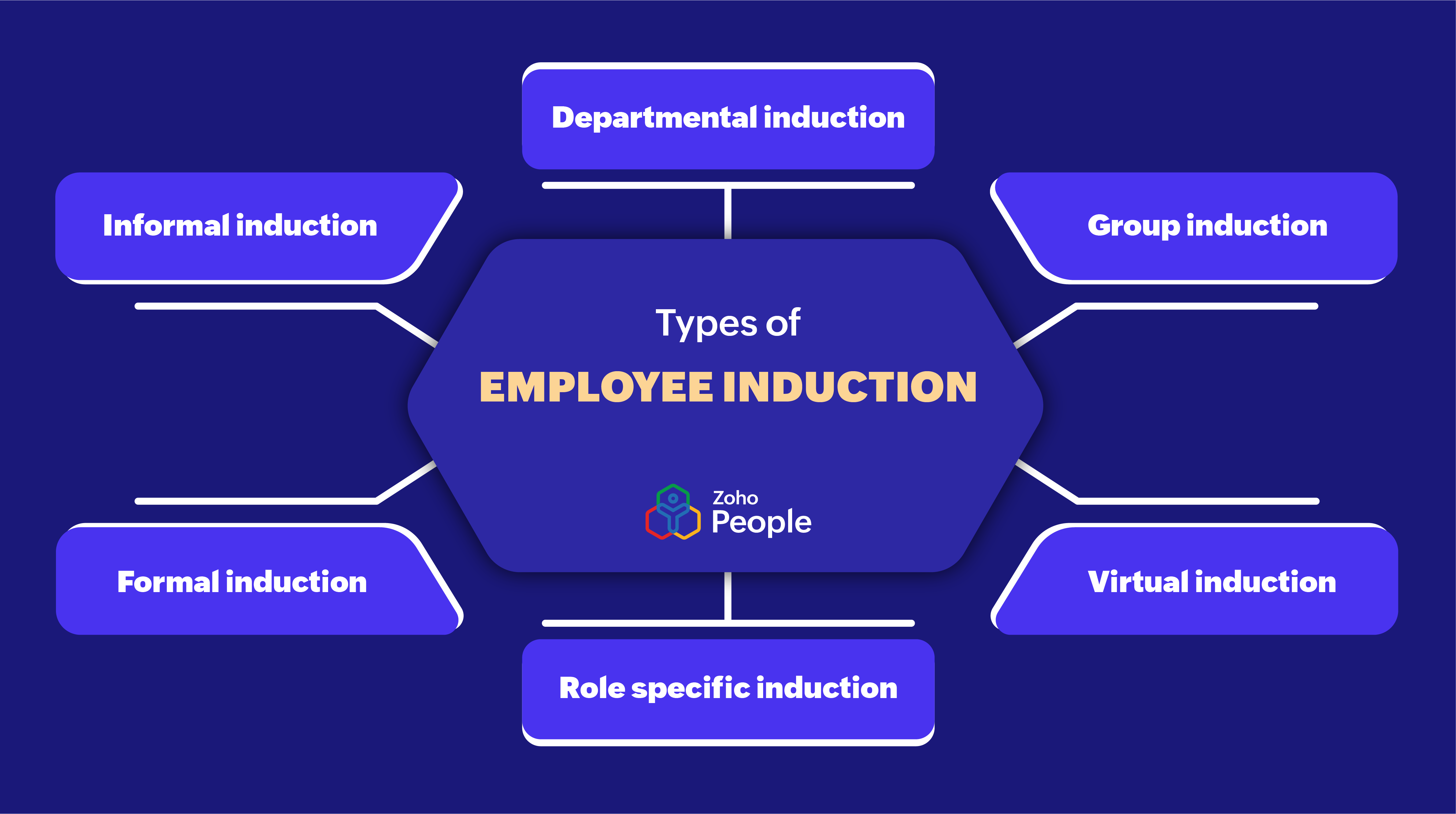- HOME
- HR insights
- Employee induction: Everything you need to know
Employee induction: Everything you need to know
- Last Updated : November 18, 2025
- 2.0K Views
- 4 Min Read

Starting a new job in a new environment brings a mix of anxiety and enthusiasm for employees. An employee induction program, also known as an orientation or onboarding program, helps them adapt to the workplace culture and understand their new roles and objectives.
What is employee induction?
Employee induction is an essential process where the organization warmly welcomes new hires into the organization and ensures they are prepared for work. An induction program is crucial for the employee life cycle, as it sets the standard for the employees' time at the organization and can impact whether they choose to invest in a long-term commitment to the organization.
Why do we conduct employee inductions?
The key objective of an employee induction is to create a comfortable experience for new hires. An effective induction program helps new hires adapt to the organization's culture, norms, and their respective teams or departments. It also helps the organization improve employee engagement and retention, as the process builds trust with new hires and helps them feel supported and connected.
According to a study by Brandon Hall Group, companies with successful induction programs enhance their employee retention by 82% and their productivity by 70%. If the induction program doesn't go as well as planned, it can negatively affect the employee's outlook about the organization and their job.
How does an employee induction program work?
To conduct a successful employee induction program, preparation is key. The role of HR is to prepare the workplace and ensure that the necessary documents are all set for the new hires to sign them.
On the first day, new hires receive a welcome kit that sets a positive tone for their first day. Then, the day begins with a presentation by an HR representative.
The new hires are exposed to the organization, its structure, culture, values, and norms. They are also given an overview of the organization's policies. The presentation often includes regular new-hire interaction in order to keep them engaged.
The new hires then are asked to sign the necessary documents, such as non-disclosure agreements (NDA), company policies, and tax forms. They're also equipped with the resources needed for their roles, such as access to internal tools, email accounts, and required software.
The day comes to an end with a tour around the organization. Here, new hires are presented to their department head and their team, and they get the chance to familiarize themselves with the environment.
Beyond the first day, the induction program might include additional support and training so new hires better understand their roles and responsibilities.
Types of employee induction
There are several types of employee induction that an organization can utilize, each known for its unique needs and function. Understanding these types helps the employer conduct a well-tailored and successful induction program.

Formal induction
A formal induction comprises a scheduled program where new hires can familiarize themselves with the organization. It typically comprises formal introductions, presentations, and the rest of the onboarding process.
Informal induction
An informal induction is a flexible onboarding process where everything is done in a casual manner. New hires are introduced to the organization through organic interactions, which can often be more effective in building workplace relationships.
Departmental induction
This type of induction is done to familiarize new hires with their particular departments. It includes a review of their role and responsibilities and the individuals they will be collaborating with.
Group induction
Group induction is specifically designed to onboard many new hires simultaneously. This builds a sense of camaraderie among them, as they share the same onboarding experience. It typically follows a scheduled program so that all the new hires receive consistent information across induction groups.
Virtual induction
With the rising amount of remote work, virtual induction has become quite common. This type of induction is conducted online with the use of various digital tools. The onboarding process and the paperwork are completed on a centralized onboarding platform, making it easier for new hires to get enrolled in the organization.
Learn more about how to set up a virtual onboarding program.
Role-specific induction
Role-specific induction focuses on training new hires on their roles and responsibilities, and it includes an introduction to the role-related tools.
Challenges and solutions in employee induction
Sometimes, organizations may face obstacles that can affect the success of the employee induction program. This may lead to a decrease in employee retention, productivity, and engagement.
Some of the key challenges faced during inductions include:
Information overloaded
Challenge
If all the information is presented on the first day, new hires may feel overwhelmed.
Solution
Break the information into segments and present it over a few days. You can also make easily digestible presentations on each topic to keep new hires focused.
Lack of engagement
Challenge
If the induction speech is dry and new hires are not engaged throughout the presentation, then this will lead to them overlooking the key points in the presentation.
Solution
Ensure that your induction presentation is interactive. Engage in conversation with your new hires and keep them involved to make your induction program interesting. This approach will help you convey the key points effectively. You can also conduct a Q&A sessions or apply the particular message in a scenario and convey that in a story telling manner.
Wrapping up
An employee induction sets the tone for your new hires' experience with the organization. A well-prepared induction program can have a significant impact on employee retention, development, productivity, and engagement. Most importantly, it can foster a sense of alignment between the new hire and the organization.


